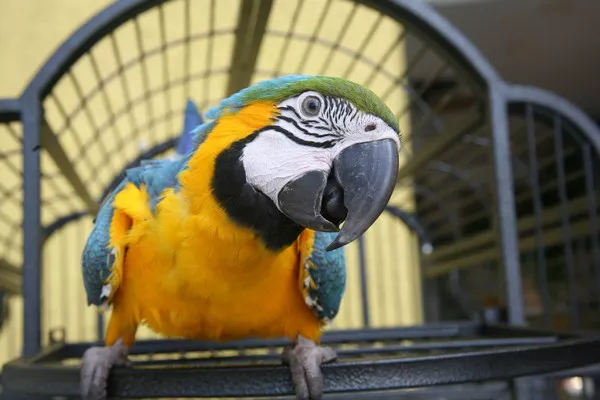The Chartreux cat is a captivating breed that combines intelligence, beauty, and an affectionate nature. Known for its unique blue-grey coat, muscular build, and sweet personality, the Chartreux has captured the hearts of many cat enthusiasts. However, to ensure that your Chartreux cat thrives in a loving home, it’s important to understand its specific needs in terms of diet, grooming, health care, and overall living environment. This article will provide a detailed, easy-to-understand guide on how to care for a Chartreux cat.
1. Introduction to the Chartreux Cat
The Chartreux cat is a breed with deep historical roots, originating from France. It is famous for its short, dense, blue-grey coat, which is often described as “water-resistant,” and its expressive amber or copper eyes. Chartreux cats are also known for their round faces, robust build, and quiet demeanor.
Although they were originally working cats, helping with pest control in French monasteries, the Chartreux cat today is primarily a companion animal that enjoys spending time with its human family members. Their calm, affectionate nature and intelligence make them excellent pets for families, individuals, and even older adults who are looking for a loyal and gentle companion.
2. Key Characteristics of a Chartreux Cat
Before delving into the specifics of Chartreux cat care, it’s important to understand what makes them unique.
Physical Traits: Chartreux cats are medium to large in size with a muscular build. They are solid and stocky, yet their round faces give them an appearance of softness. Their short coat is made of dense, water-resistant fur that is typically a bluish-grey color, often with a silvery sheen. Their round eyes are a defining feature, and they can be amber, gold, or copper in color.
Temperament: One of the standout traits of the Chartreux breed is their gentle, calm demeanor. They are known for being affectionate but not overly demanding. They are loyal companions who often form strong bonds with their owners, but they are not overly clingy. Chartreux cats tend to enjoy human company and are often content to sit by their owners or follow them around the house. They are quiet and typically do not make loud noises, making them ideal for quiet households.
Intelligence: Chartreux cats are extremely intelligent. They are quick learners and can be trained to follow commands, use the litter box, and even perform tricks. Their problem-solving abilities make them great at interacting with their environment, and they may even enjoy puzzle toys and games.
3. Creating the Right Living Environment for Your Chartreux Cat
The first step in caring for a Chartreux cat is to create a safe and comfortable living environment. Chartreux cats are generally adaptable, but they will thrive best in homes where their environment is calm, stimulating, and free from stress.
Space and Enrichment: While the Chartreux cat is not as active as some other breeds, it still needs space to roam, explore, and play. Providing vertical spaces such as cat trees or shelves is a great way to keep your cat entertained and give them a place to observe the household from a height. You should also provide interactive toys and puzzle feeders to challenge their intelligence and keep them mentally stimulated. Avoid leaving them in a cramped or cluttered space.
Safe and Quiet: Chartreux cats are generally sensitive to loud noises and chaotic environments. It’s important to ensure that their space is quiet and free from excessive noise. Having a designated, quiet resting area where your cat can retreat to when they feel overwhelmed can help them feel secure.
Litter Box: As with any cat, a clean and accessible litter box is essential for the Chartreux’s well-being. These cats tend to be particular about cleanliness, so make sure the litter box is cleaned daily and placed in a quiet, easily accessible location.
4. Diet and Nutrition for the Chartreux Cat
A well-balanced diet is key to maintaining a healthy and active Chartreux cat. This breed requires a high-quality diet that provides all the necessary nutrients for their muscular build and active lifestyle.
Quality Food: Choose a high-quality commercial cat food that lists meat as the first ingredient. Whether you choose wet or dry food, ensure it meets the nutritional requirements of your cat’s age, health, and activity level. Since Chartreux cats have a muscular build, they may require a higher protein content in their food compared to some other breeds.
Portion Control: Like many cats, Chartreux cats can become overweight if their diet is not managed carefully. To avoid obesity, measure out their food and avoid overfeeding. Chartreux cats are generally not overly greedy eaters, but it’s important to monitor their weight to ensure they maintain a healthy body condition.
Fresh Water: Always provide fresh water for your cat. Some Chartreux cats may prefer drinking from running water, so a cat water fountain can encourage them to drink more.
Special Diets: If your cat has special dietary needs (such as allergies, kidney disease, or obesity), consult with your veterinarian to formulate an appropriate feeding plan.
5. Grooming Your Chartreux Cat
Despite their dense and water-resistant coat, Chartreux cats do not require excessive grooming. Their short coat is relatively low-maintenance, but regular brushing will help keep it shiny and reduce shedding.
Brushing: Brush your Chartreux cat’s coat at least once a week to remove loose hairs and prevent matting. This will also reduce the amount of hair your cat sheds around the house. Some Chartreux cats may shed more during seasonal changes, so be prepared to brush more frequently during these times.
Bathing: While the Chartreux cat’s coat is water-resistant, they do not generally require regular baths. Only bathe your cat if they get into something sticky or dirty that cannot be removed through brushing alone. Use a cat-safe shampoo and avoid over-bathing, as it can strip their coat of natural oils.
Nail Trimming: Trim your Chartreux cat’s nails regularly to keep them from becoming too long or sharp. This is especially important if your cat is indoor-only and doesn’t wear down their nails naturally. Aim to trim their nails every few weeks, depending on their activity level.
Ear and Eye Care: Check your cat’s ears and eyes regularly for any signs of infection, such as redness, discharge, or excessive wax buildup. Clean the outer ear area with a damp cotton ball if needed, and gently wipe around the eyes with a soft cloth.
6. Health Care and Vet Visits
Keeping your Chartreux cat healthy involves regular veterinary care and being aware of any potential health issues that might arise.
Regular Vet Checkups: It’s essential to schedule annual veterinary visits for your Chartreux cat to monitor their health and catch any potential problems early. Your vet will check for dental health, vaccinations, and overall well-being during these visits.
Vaccinations: Ensure that your Chartreux cat is up to date on vaccinations, including core vaccines such as rabies, feline distemper (FVRCP), and feline leukemia (FeLV). Your vet may recommend additional vaccines depending on your cat’s lifestyle and geographic location.
Parasite Control: Fleas, ticks, and worms can affect any cat, and the Chartreux is no exception. Use a veterinarian-approved flea and tick prevention plan, and have your cat tested for intestinal parasites regularly, especially if they go outdoors.
Common Health Problems: Chartreux cats are generally healthy and robust, but they can be prone to certain genetic conditions, including hip dysplasia and heart disease. Regular checkups and early detection of these issues can help manage their health and ensure a long, happy life.
7. Socializing and Training Your Chartreux Cat
Chartreux cats are generally sociable and enjoy interacting with their human companions. However, they are also independent, and their personality may require time and patience to develop. Here are some tips for socializing and training your Chartreux cat:
Socialization: Chartreux cats tend to be more reserved around strangers but are usually affectionate with their family members. Early socialization during kittenhood can help them become more comfortable with new people, pets, and situations. If you are adopting an adult cat, allow them to adjust to their new environment at their own pace.
Training: Chartreux cats are very trainable and can be taught basic commands, tricks, and even how to walk on a leash. Use positive reinforcement techniques such as treats and praise to encourage desired behaviors. Their intelligence makes them eager to please, so training sessions can be a fun and rewarding experience for both you and your cat.
Interactive Play: Chartreux cats enjoy interactive play, and it’s a great way to bond with them. Use toys such as wand teasers or laser pointers to keep them active and engaged. Puzzle toys are also ideal for stimulating their minds and providing entertainment.
Conclusion
Caring for a Chartreux cat requires attention to their specific needs in terms of diet, grooming, socialization, and health care. By providing a comfortable living environment, a nutritious diet, and regular vet checkups, you can ensure that your Chartreux cat lives a long, healthy, and happy life. With their gentle, affectionate nature and intelligence, Chartreux cats are truly wonderful companions that will bring joy to any home. Whether you’re a first-time cat owner or a seasoned feline enthusiast, the Chartreux is sure to enrich your life with its quiet charm and loving presence.
Related Topics:




















